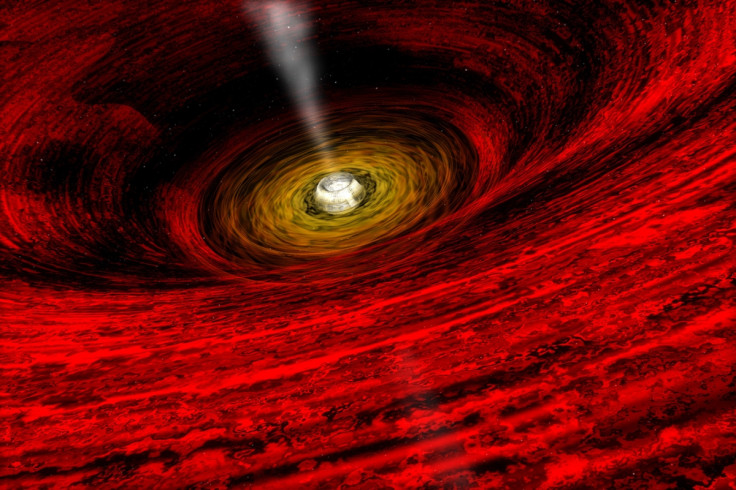Black hole sun: Planets orbiting freezing cold dark voids could hold life and power a microwave

Planets that orbit a black hole could theoretically sustain life despite freezing temperatures, say researchers. The theory uses the opposite understanding of how life on Earth came to exist, where heat energy is primarily obtained from the solar-system's Sun.
The second law of thermodynamics dictates that in order for life to exist, there needs to be an energy source, made from a big temperature difference. On Earth, we utilise the hot Sun and cold space.
The researchers, from Palack´y University in Czech Republic, say in their study that a planet orbiting a black hole would work oppositely, where the black hole would be very cold, and the space around the planet would provide the warmth.
The energy generated on this planet would be the equivalent of around 900 watts – enough to power a microwave. Whilst this is plenty to harbour life, the scientists are under no illusion that 900 watts is enough for a civilisation to thrive.
"For non-rotating black holes and the present temperature of the cosmic microwave background, the available power appears to be rather small for the living standards of our civilisation," write the authors in the paper. "With the accelerated expansion of the Universe the background radiation becomes colder so that even less power would be available."
The authors describe how black holes are so cold that they literally have no temperature to speak of. Whilst space generally has the same temperature around this hypothetical planet as Earth (around -270C), it appears a lot warmer because of the relative coldness from the black hole.
Imagine running your hand under a cold tap on a hot day. Now imagine running your hand under the same tap after you've been outside for a long time on a brisk winter's day – the temperature of the water is the same, but it feels different depending on the temperature around it.
The researchers used the film 'Interstellar' as a comparison to their research. They found that whilst there are glaring holes – excuse the pun – in the film's science, there are also some interesting ideas.
"Although the highly inspiring idea of the movie Interstellar to explore planets orbiting Kerr black holes is appealing, the conditions on Miller's planet of the film prove to be rather harsh," they write. "This could be expected: since the time dilatation on the planet is about sixty thousand, the astronauts would receive signals from the distant outside arriving about sixty thousand times faster than emitted.
"Such a frequency shift must apply also to the cosmic background, turning it much hotter. With a suitably chosen orbit slightly farther from Gargantua [the name given to the black hole in Interstellar], one can hope to find the sky conditions of the planet much closer to terrestrial."
© Copyright IBTimes 2025. All rights reserved.






















